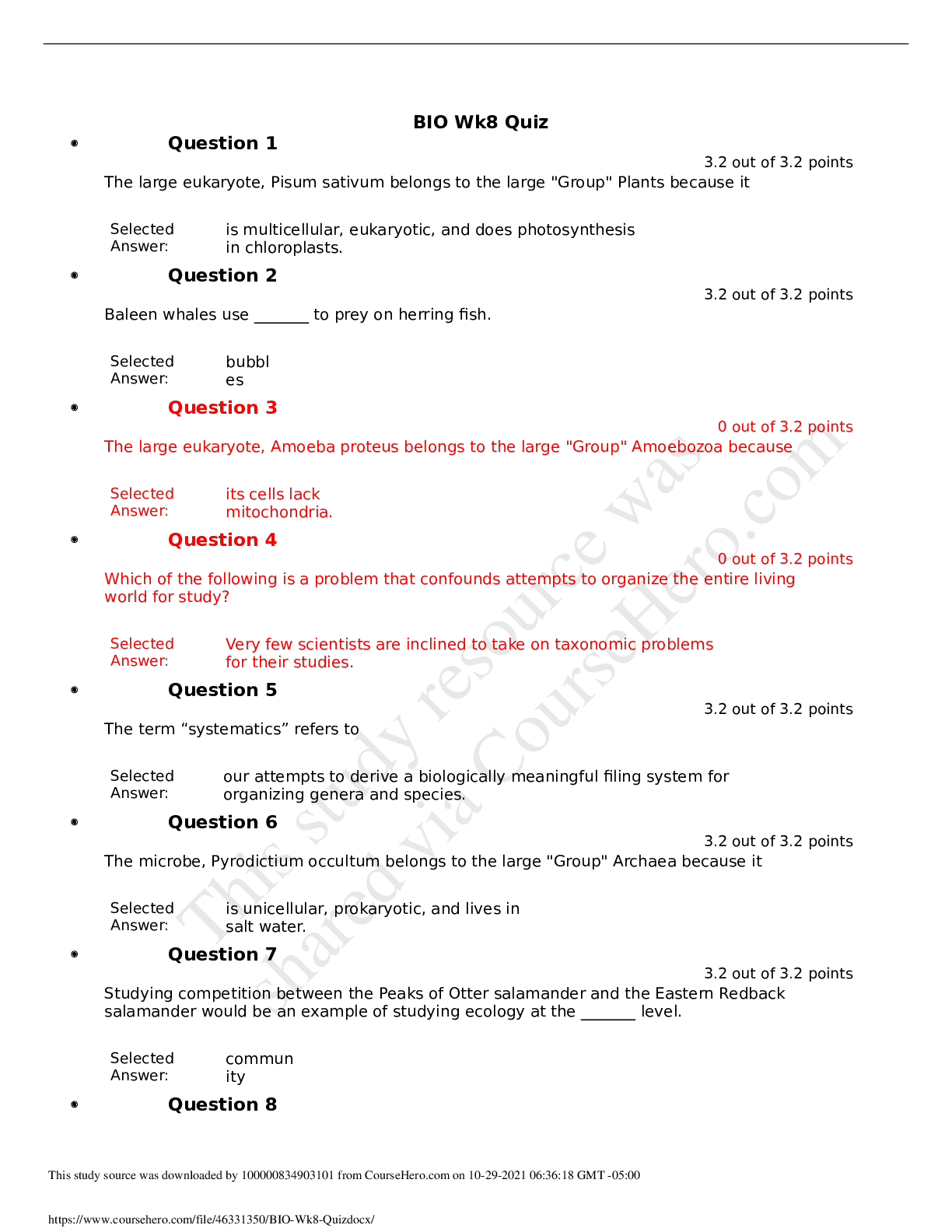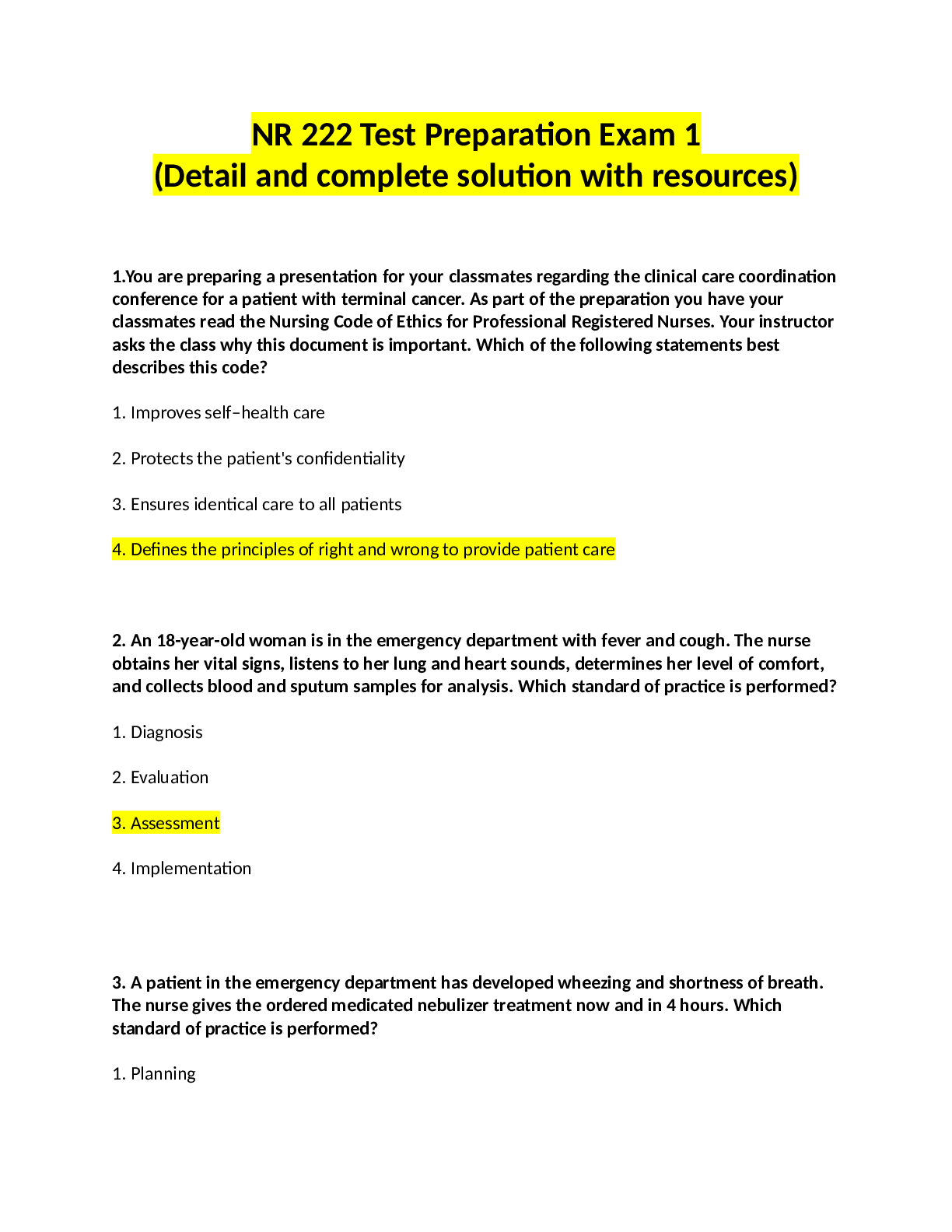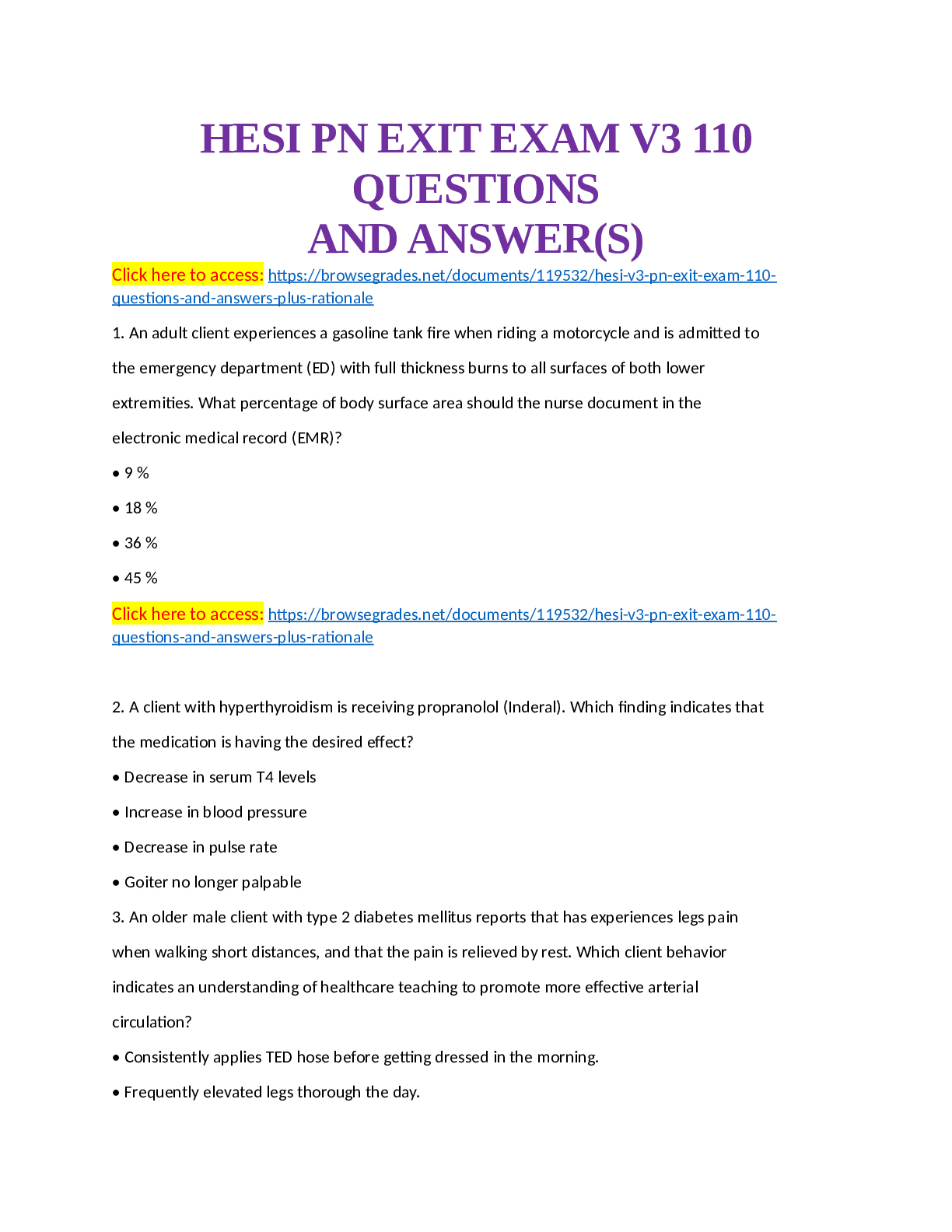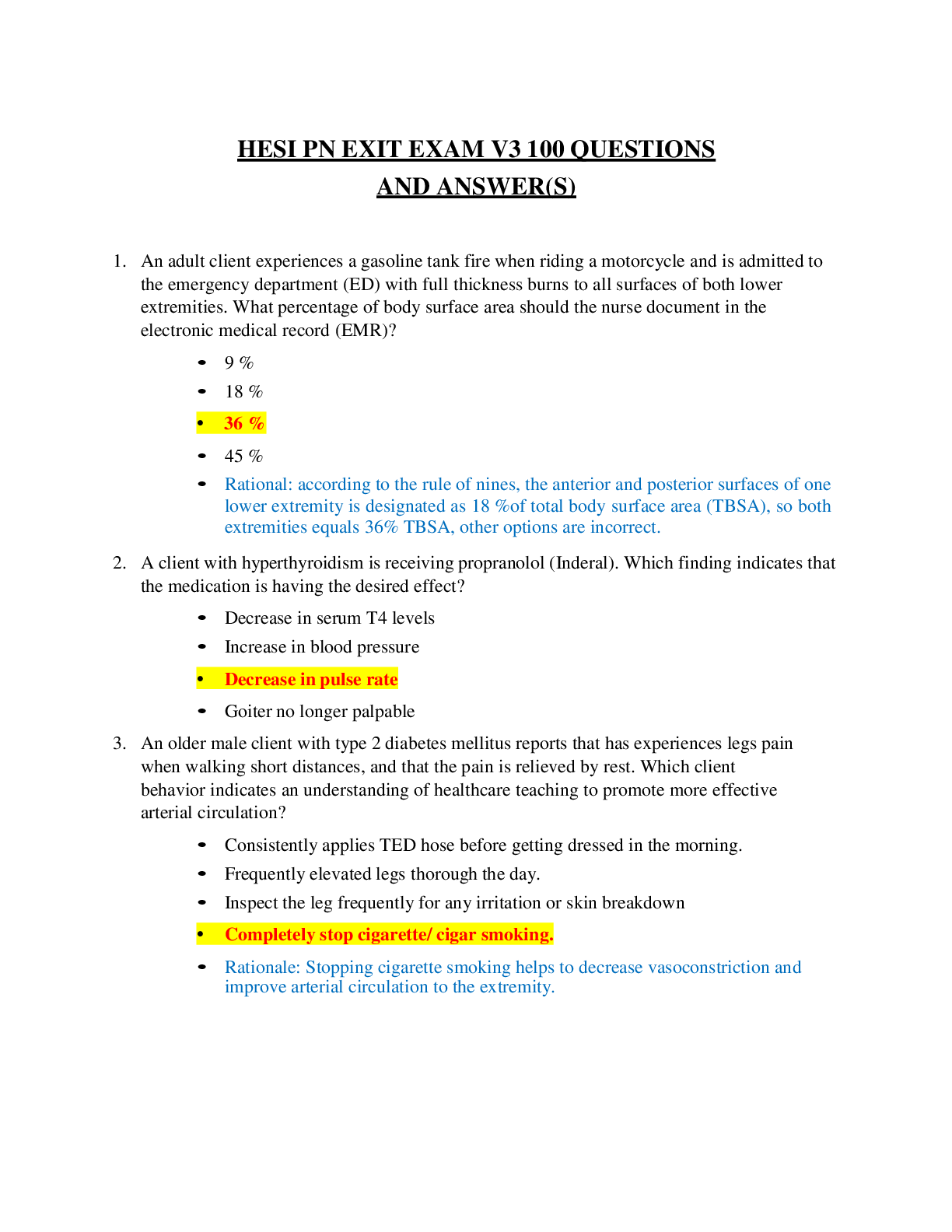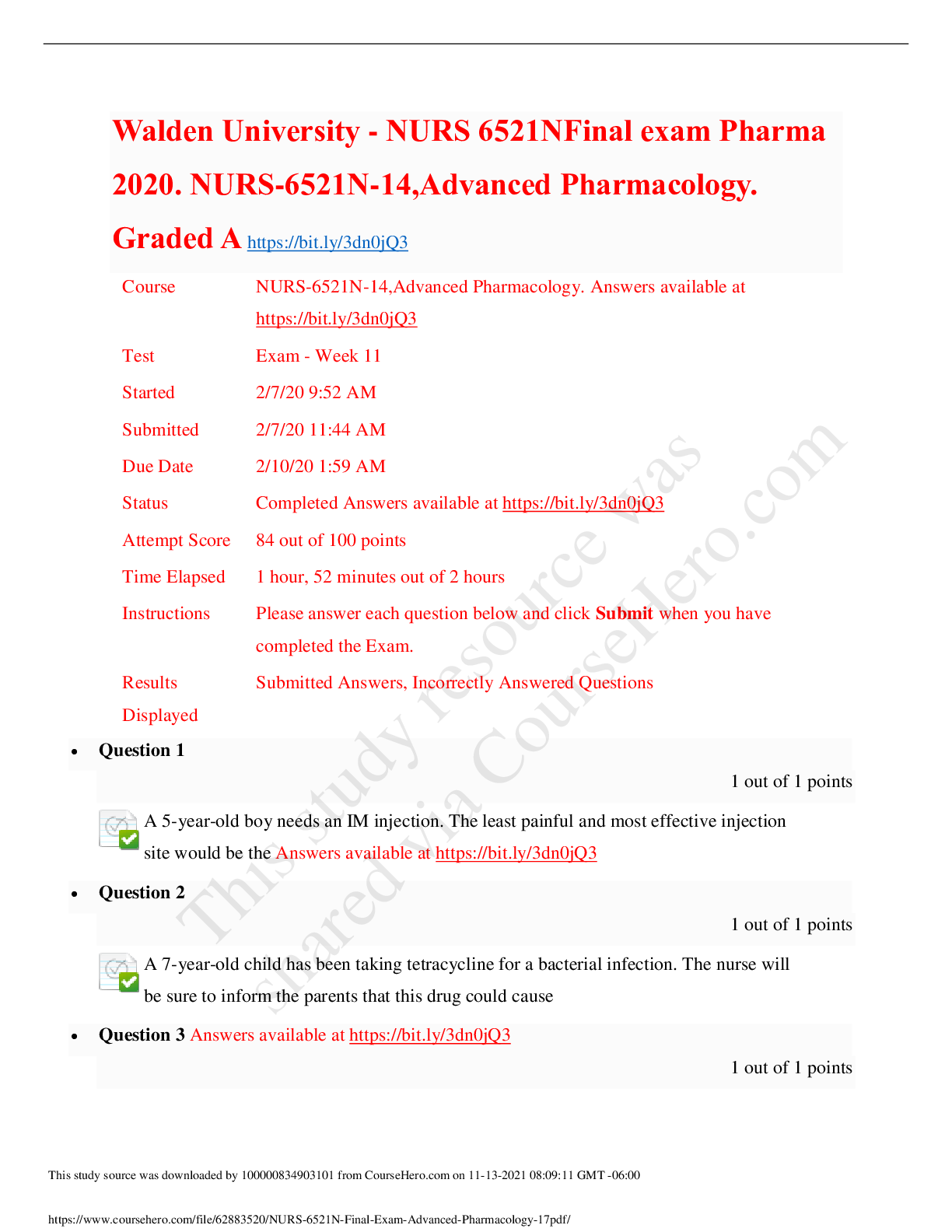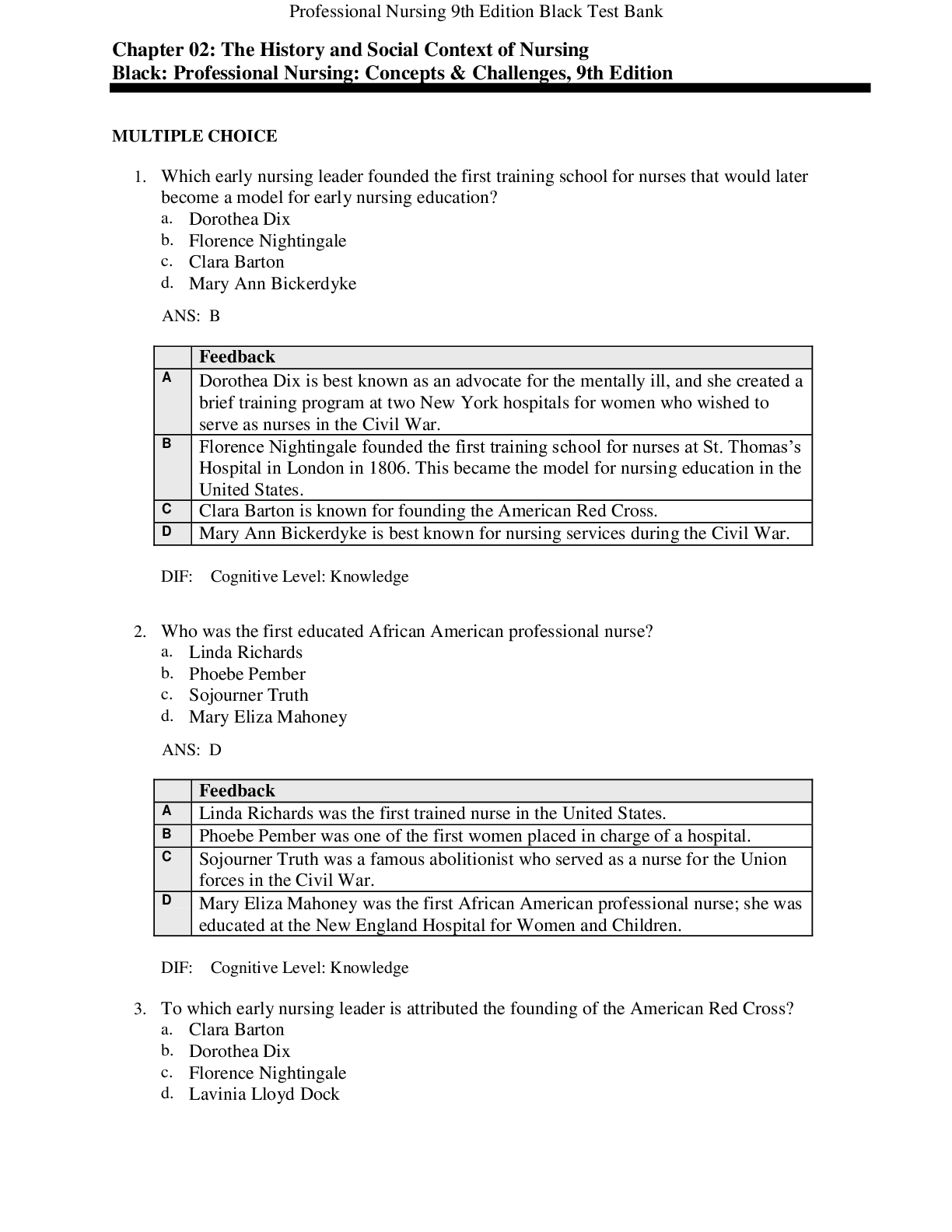Environmental Science > AQA QUESTION and MARK SCHEMES > Questions and Answers > SCIENCE 101Stephani DeBise - Carbon Cycling GIZMO (All)
Questions and Answers > SCIENCE 101Stephani DeBise - Carbon Cycling GIZMO
Document Content and Description Below
Student Exploration: Carbon Cycle Vocabulary: atmosphere, biomass, biosphere, carbon reservoir, carbon sink, fossil fuel, geosphere, greenhouse gas, hydrosphere, lithosphere, photosynthesis Prio... r Knowledge Questions (Do these BEFORE using the Gizmo.) In the process of photosynthesis, plants take in carbon dioxide (CO2) from the atmosphere and water (H2O) from the soil. Using the energy of sunlight, plants build molecules of glucose (C6H12O6) and oxygen (O2). Make sure all of your answers are in a different color. 1. How do plants on Earth affect the amount of carbon in Earth’s atmosphere? Plants take in carbon dioxide and process it into oxygen. 2. Animals eat plants and produce carbon dioxide and water. How do animals affect the amount of carbon in Earth’s atmosphere? They eat plants that process carbon dioxide and when they eat theses plants, there are fewer plants that can process the carbon dioxide. Gizmo Warm-up The Carbon Cycle Gizmo allows you to follow the many paths an atom of carbon can take through Earth’s systems. To begin, notice the black carbon atom in the Atmospheric CO2 area, highlighted in yellow. The glowing blue areas represent possible locations the carbon atom could go next. 1. From Earth’s atmosphere, where can the carbon atom go next? Oceanic Co2, land plants, and exposed rock 2. Click on Land plants and read the description (at the bottom of the simulation). How did the carbon atom get from the atmosphere to a plant? Plants use energy from the sun for photosynthesis. Most of the oxygen is released. 3. Select Land animals. How did the carbon atom get from land plants into the animal (read the description )? Land animals consume plants for energy. 4. Select Atmospheric CO2. How did the carbon atom get from land animals back to the atmosphere? They release carbon dioxide back into the atmosphere through cellular respiration. Activity A: Carbon pathways Get the Gizmo ready: ● Click Reset. Introduction: Earth can be divided into four systems. The atmosphere is the air above Earth’s surface. The hydrosphere is composed of all of Earth’s water. The geosphere is the rocky, non-living part of Earth. The biosphere consists of all living things, including people. Some scientists use the term “anthroposphere” to describe everything made or modified by humans. Question: How does carbon move between the atmosphere, hydrosphere, biosphere, and geosphere? 1. Explore: Use the Gizmo to create a path for carbon (7 steps total) that begins and ends in the atmosphere. Fill in the steps in the path below. Then, summarize very briefly how the carbon atom got to that location. Carbon path How it got there Atmospheric CO2 Atmospheric CO2 comes from volcanoes, burning fossil fuels, and other sources. Exposed Rock Plants and exposed rock consume carbon through photosynthesis Oceanic CO2 It travels through the streams and rivers into the water Shells/Coral Marine animals use the carbon to create new shells Limestone Calcium carbonate structures are piled up onto the ocean floor and are compressed into limestone Lithosphere An enormous amount of Earth’s carbon is stored in limestone Volcano Carbon dioxide is dissolved in magma below volcanoes Atmospheric CO2 During volcanic eruptions, carbon dioxide is released into the air 2. Create: Click Reset. Use the Gizmo to create a path in which the carbon atom goes from the atmosphere to the hydrosphere, biosphere and geosphere (see the definitions at the beginning of Activity A). Describe each transition briefly. Atmosphere Hydrosphere Biosphere Geosphere Atmospheric CO2 Oceanic Co2 Marine Plants/Algae Exposed Rock Volcanoes, burning fossil fuels, and other sources. It travels from the atmosphere into the water when some of it is released. It goes from the ocean to the ocean plants during photosynthesis It travels from the marine plants into the rock when it is released 3. Explore: Use the Gizmo to create three more (different) carbon paths, each starting and ending in the atmosphere. Label each location with A for atmosphere, B for biosphere, G for geosphere, or H for hydrosphere. Path 1: Atmosphere: A - Oceanic Co2: H - Atmosphere: A Path 2: Atmosphere: A - Land Plants: B - Coal: B - Power Plant: B - Atmosphere: A Path 3: Atmosphere: A - Land Plants: B - Land Animals: B - Atmosphere: A 4. Explain: Based on the Gizmo, explain how the following transitions might take place: A. Describe at least two ways that carbon can get from a land plant to the atmosphere. It can get there from forest fires and land animals. When the plants burn in a forest fire, the fumes are carbon dioxide. When land animals breathe, they exhale carbon dioxide which is filtered back into [Show More]
Last updated: 2 years ago
Preview 1 out of 6 pages

Buy this document to get the full access instantly
Instant Download Access after purchase
Buy NowInstant download
We Accept:

Reviews( 0 )
$6.50
Can't find what you want? Try our AI powered Search
Document information
Connected school, study & course
About the document
Uploaded On
Dec 16, 2022
Number of pages
6
Written in
Additional information
This document has been written for:
Uploaded
Dec 16, 2022
Downloads
0
Views
84


